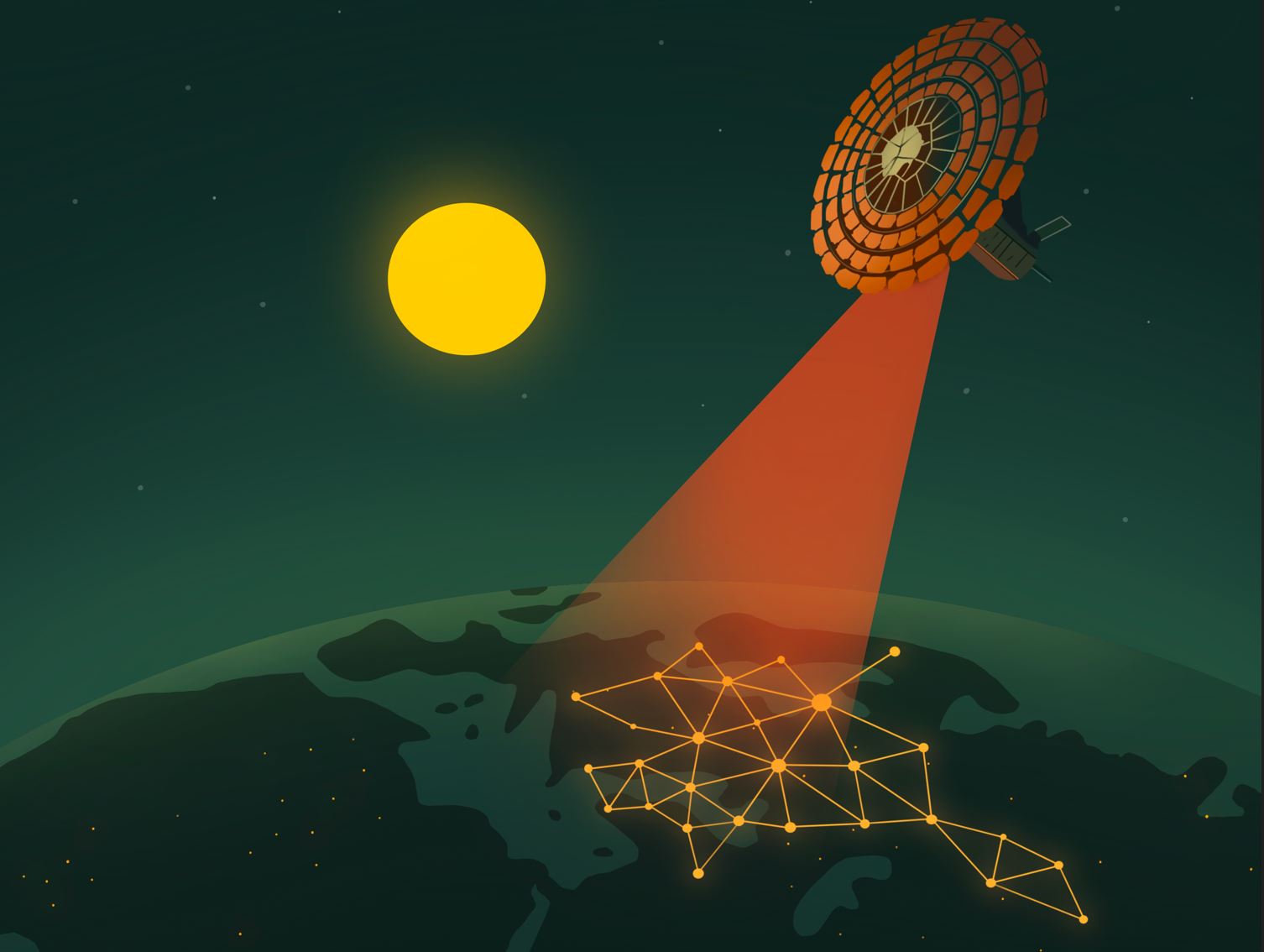Media release
From:
Putting solar panels in space could aid Europe’s net-zero transition
Space-based solar panels could enable solar power to be harvested continuously instead of only when sunlight reaches Earth, reducing Europe’s need for Earth-based wind and solar by 80%, finds a study publishing August 21 in the Cell Press journal Joule. Using energy models, researchers estimate that in 2050, space-based solar power could cut the total costs of Europe’s total grid system by 7%–15%. However, these numbers hinge upon the rapid development of two NASA-designed technologies in order to meet Europe’s goal to achieve net-zero by 2050.
“In space, you potentially have the ability to position solar panels to always face the sun, which means power generation can be nearly continuous compared to the daily pattern on Earth,” says senior author and engineer Wei He of King’s College London. “And, because it’s in space, the solar radiation is higher than on the Earth's surface.”
The idea of putting solar panels in space was originally proposed in 1968, but the concept was technologically and economically impossible until recently. Now, space-based solar power is being actively pursued by China, India, Japan, Russia, the US, and the UK.
Space-based solar panels would work much like communications satellites—the panels would orbit Earth, rotating to optimally catch the sun’s rays, and this energy would be beamed to receiving stations on Earth in the form of microwaves, which could then be converted to electricity and fed into the existing grid infrastructure.
“This is the first paper to put space-based solar power into the energy system transition framework,” says He. “We're currently at a stage to transfer this blue-sky idea into testing at a large scale, and to begin discussing regulation and policymaking.”
To examine whether space-based solar power could aid Europe’s net-zero goal, the team used models of Europe’s energy grid in 2050. First, they estimated the annual costs and energy-harvesting potential for two space-based solar power designs from NASA—the Innovative Heliostat Swarm and the Mature Planar Array. The heliostat design is in the early stages of development but has higher potential to continuously capture solar energy, whereas the simpler planar array is closer to being technologically ready but can only capture solar energy around 60% of the time, which is still a big step-up from the 15%–30% efficiency of standard Earth-based solar panels.
Then, the researchers compared scenarios with and without space-based solar power to test whether the technology could complement or outcompete other sources of renewable energy in Europe. They found that though the planar design was less economical than Earth-based renewable energy in all of the scenarios, the heliostat design would outperform wind and solar power by 2050, with performance and costs projected by NASA.
Overall, the model estimated that the heliostat design would reduce total system costs by 7%–15%, offset up to 80% of wind and solar, and reduce battery usage by over 70%, though hydrogen storage would still be vital in the winter months for some regions.
To be cost effective, the team estimated that the heliostat design’s annual costs would need to decrease to about 14 times the estimated cost for Earth-based solar panels in 2050, whereas the planar design would be cost effective at 9 times the estimated cost for Earth-based solar panels in 2050.
“At present, space-based solar power’s costs are 1–2 orders of magnitude above these break-even points,” says He.
Despite its relative inefficiency, the researchers say that it’s worth pursuing the planar design in addition to the more efficient heliostat because it has a higher technological readiness and thus could be used to demonstrate and further develop the concept on a shorter timescale.
“We recommend a coordinated development strategy that combines and leverages both technologies to achieve better performance,” says He. “By first focusing on the more mature planar design, we can demonstrate and refine space-based solar power technologies while concurrently accelerating R&D for designs with more continuous power generation.”
The researchers note that many technological breakthroughs are needed before space-based solar power can be implemented. In particular, large-scale testing of wireless transmission is essential, and advancements are needed to enable the devices to be robotically assembled while in orbit.
“In the future, I also want to explore potential risks to space-based solar power, such as orbital debris and system degradation, and how we can minimize those risks,” says He.
Multimedia




 International
International


